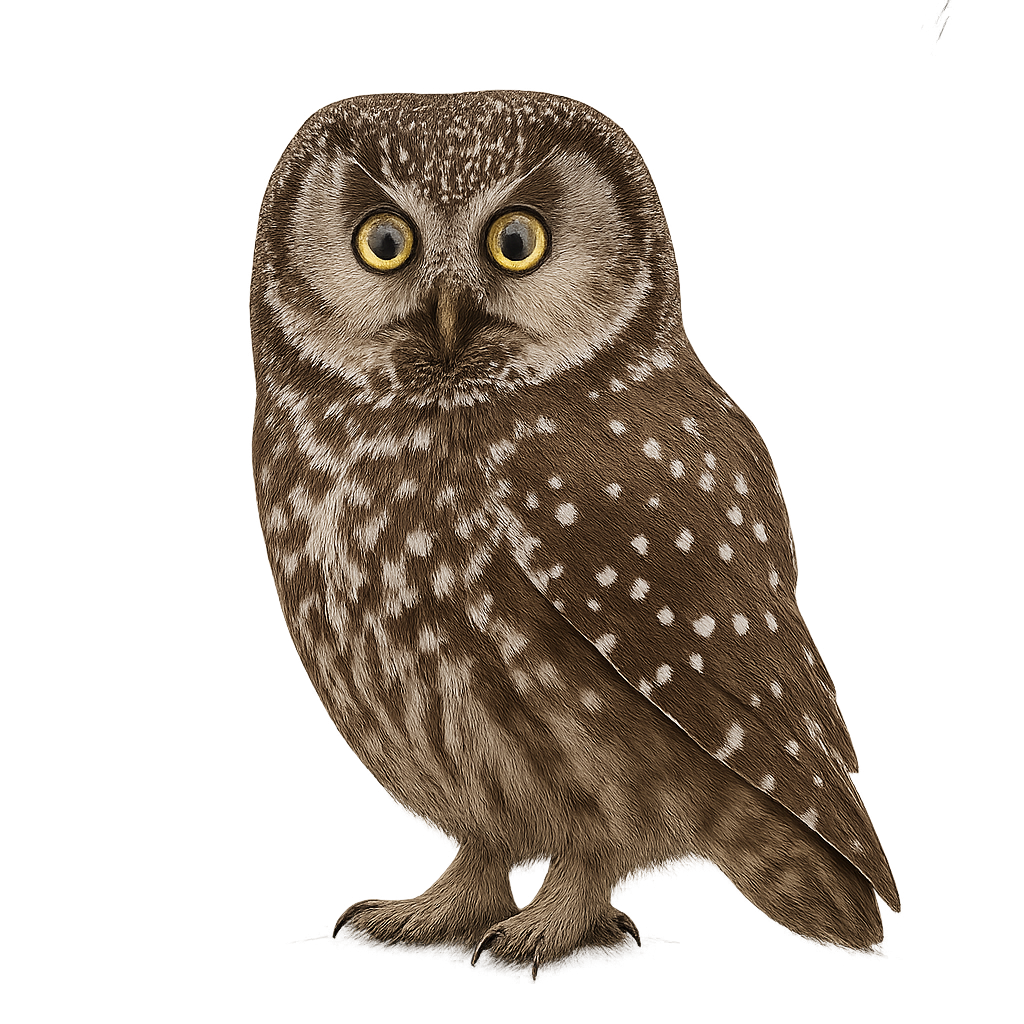Observe and photograph a species in its natural habitat
Learn where and when to observe a species in the wild, how to recognize it in the field, and what habitats it lives in. Get photography tips adapted to its behavior and capture stunning images without disturbing the animal. For full details, open the complete profile in the WildlifePhotographer app.
Tengmalm's owl
Scientific name: Aegolius funereus

IUCN Status: Least Concern
Family: STRIGIDAE
Group: Birds
Shyness: Suspicious
Safe distance: 30 m
Breeding season / Courtship: 01.02-28.02
Gestation: 28 à 29 jours
Births: 28.04-27.05
Habitat:
Coniferous forests
Description:
Tengmalm's Owl is a small nocturnal raptor, easily recognized by its small size and large, piercing yellow eyes. It has gray-brown plumage with characteristic white markings on the head, wings, and back. Its ears are very inconspicuous, and its face is surrounded by a pale facial disc. This owl primarily inhabits coniferous forests, dense wooded areas, and mountains, where it hides in tree cavities or abandoned nests of other birds.
Tengmalm's Owl mainly hunts small mammals, birds, and insects, which it catches at night by flying silently through the forests. It is particularly active during the breeding season, when it emits characteristic calls to attract its mate. Although it is relatively discreet and often difficult to observe, Tengmalm's Owl is protected in some areas, though its population is threatened by deforestation and habitat loss.
Recommended lens:
>=300 mm
Photography tips:
Use a telephoto lens to photograph from a distance, respecting the owl's discreet nature.
Photograph early in the morning or late in the afternoon, when the owl is more active.
Look for it in coniferous forests or wooded mountain areas, especially in ranges such as the Alps, Jura, or Vosges.
Be patient and discreet to avoid disturbing its natural behavior.
The Boreal Owl is classified as Least Concern by the IUCN. However, it is sensitive to the loss of its forest habitat. It is essential to respect its natural environment and minimize human disturbance.
Ready to take action?
Choose your platform and start your free trial today



